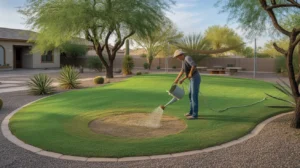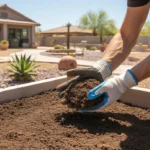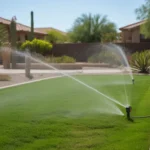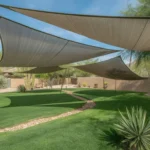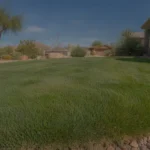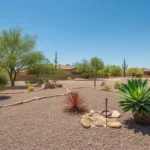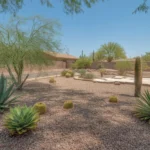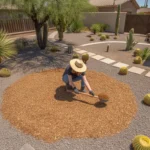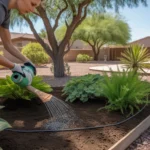As summer temperatures soar in Queen Creek, even the most well-tended lawns can suffer from heat stress. Scorched grass, wilted blades, and patchy brown spots are all too common sights. But don’t despair! With the right care and attention, you can revive your heat-stressed lawn and restore it to its former glory. Here’s how to bounce back and enjoy a lush, green yard once again.
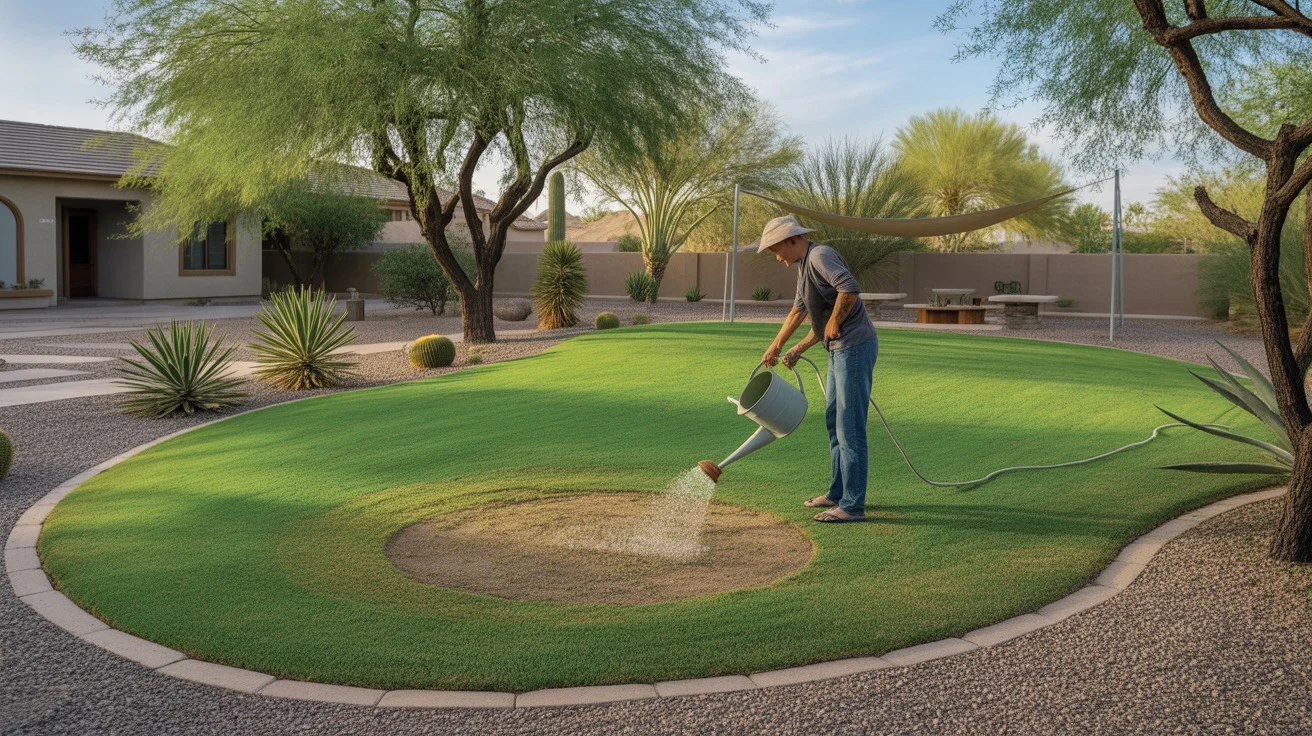
Assess the Damage and Adjust Your Watering
The first step in reviving a heat-stressed lawn is to assess the extent of the damage. Look for areas that are particularly dry, discolored, or showing signs of wilting. These are the spots that will need extra TLC during the recovery process.
Next, take a close look at your watering habits. During extreme heat, grass needs more moisture to stay healthy. Increase the frequency and duration of your watering sessions, making sure to deliver at least 1-1.5 inches of water per week. The best time to water is early morning, before the sun is at its strongest. This allows the grass to absorb the moisture before it evaporates in the midday heat.
If you have an irrigation system, check that all the heads are functioning properly and providing even coverage. Hand-watering with a hose or sprinkler can help target extra-dry patches. Just be careful not to overwater, as this can lead to fungal growth and other issues.
Raise Your Mower Blade
When grass is stressed from heat, it’s important to avoid putting additional strain on it. One simple way to do this is by raising your mower blade. Taller grass blades provide more shade for the soil, helping it retain moisture and stay cooler.
Aim for a mowing height of 3-4 inches during the summer months. If your grass is particularly heat-stressed, you may even want to let it grow a bit taller than usual before gradually bringing the height back down. Remember to never remove more than one-third of the grass blade height at a time.
It’s also crucial to keep your mower blades sharp. Dull blades tear the grass rather than cutting cleanly, which can further weaken heat-stressed turf. If you notice ragged edges after mowing, it’s time to sharpen or replace your blades.
Feed Your Lawn Wisely
Proper nutrition is key to helping your lawn recover from heat stress. But timing is everything when it comes to fertilizing. Avoid feeding your grass during the hottest part of summer, as this can actually do more harm than good.
Instead, wait until temperatures start to cool off in late summer or early fall. This is when grass begins actively growing again and can make the most use of added nutrients. Choose a fertilizer formulated for your grass type and apply it according to the package directions.
If you’re not sure what type of fertilizer to use or how much to apply, consider having your soil tested. A soil test will reveal any nutrient deficiencies and help guide your fertilization plan. You can pick up a soil testing kit at most garden centers or send a sample to your local cooperative extension office.
Tackle Weeds and Bare Spots
Heat-stressed lawns are more susceptible to weed invasions, especially in areas where the grass has thinned out. Crabgrass, spurge, and nutsedge are common summer weeds in Queen Creek. The best defense is a thick, healthy lawn that can outcompete weeds for resources.
Hand-pull weeds when possible, making sure to get the entire root system. For larger infestations, spot-treat with a selective herbicide that won’t harm your grass. Always follow the label instructions carefully and avoid applying herbicides during extreme heat.
If you have bare or patchy areas, overseed with a grass variety that matches your existing lawn. Prepare the soil by loosening it with a rake, then scatter the seed and lightly cover it with a thin layer of mulch or compost. Keep the seeded area consistently moist until the new grass is established.
Aerate and Dethatch as Needed
Heavy foot traffic, clay soils, and thick thatch layers can all contribute to soil compaction. This makes it harder for grass roots to access the oxygen, water, and nutrients they need—a problem that’s compounded by heat stress.
If your lawn feels spongy or water seems to run off rather than soaking in, it may be time to aerate. Core aeration involves removing small plugs of soil to create channels for air, water, and nutrients to penetrate. You can rent an aerator or hire a professional service. Aim to aerate cool-season grasses in early fall and warm-season grasses in late spring.
Thatch is the layer of dead grass stems, roots, and other organic matter that accumulates between the soil surface and the living grass blades. A thin layer of thatch is beneficial, but too much can impede water and nutrient uptake. If your thatch layer is more than a half-inch thick, use a dethatching rake or power dethatcher to remove the excess in early fall for cool-season grass or late spring for warm-season types.
Provide Shade and Airflow
In the intense Queen Creek summer sun, even a bit of shade can provide welcome relief for heat-stressed grass. If your lawn lacks natural shade from trees or structures, consider adding a shade sail or umbrella in particularly sunny spots. This is especially helpful for areas near reflective surfaces like driveways or south-facing walls that can intensify the heat.
Good airflow is also important for preventing fungal diseases that can take hold in stagnant, humid conditions. Prune low-hanging tree branches and space out garden plantings to allow breezes to move through. If you have a fence or wall around your yard, make sure there are gaps or openings for air to circulate.
Be Patient and Stay the Course
Reviving a heat-stressed lawn takes time and consistent effort. Even if you do everything right, it may take a few weeks or even months for your grass to fully recover. The key is to stay the course and keep up with proper watering, mowing, and fertilizing practices.
As temperatures start to cool in the fall, your lawn will begin to perk up and regain its color. This is a great time to give it a bit of extra care to help it bounce back strong. Apply a fall fertilizer, overseed any thin areas, and continue watering deeply and infrequently until winter rains take over.
With patience and perseverance, you can help your Queen Creek lawn recover from even the most intense summer heat. By following these revival tips and giving your grass the TLC it needs, you’ll be rewarded with a lush, resilient lawn that can handle whatever the desert climate throws its way.

